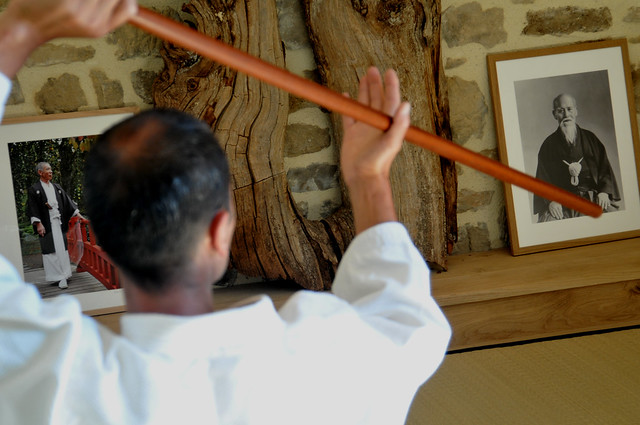物有本末
事有終始
知所先後
則近道矣Things have their root and their branches.
Affairs have their end and their beginning.
To know what is first and what is last
will lead near to what is taught in the Great Learning.Da Xue, the Great Learning
This summer I was listening to Anne Cheng on French radio, France Culture. I then heard of the Da Xue, The Great learning. What I heard was a mirror to my understanding and to my study of martial arts. We carry within ourselves the cultural inheritance of our fathers, in blood and in spirit. That is how I see the continuity inside Noro sensei’s teaching and in my own study. We have a spiritual backbone. We have to study to unveil what we carry, unknowingly. This is “being faithfull to the master and to the student”.
An introduction to Ringenkai Aikido, part 5
Next: The will to build a dojo

 Nguyen Thanh Thien before the example of his masters. Photography by Nguyen Thanh Khiet ©2017
Nguyen Thanh Thien before the example of his masters. Photography by Nguyen Thanh Khiet ©2017